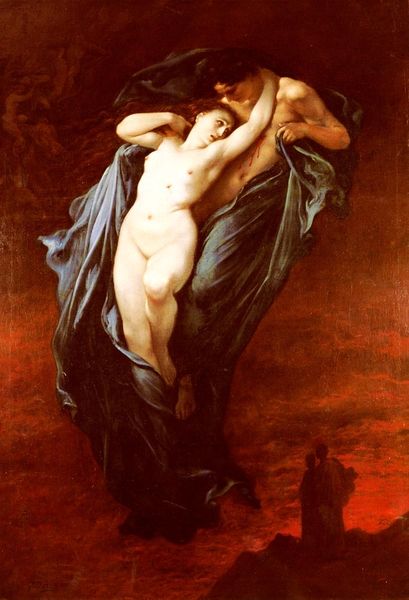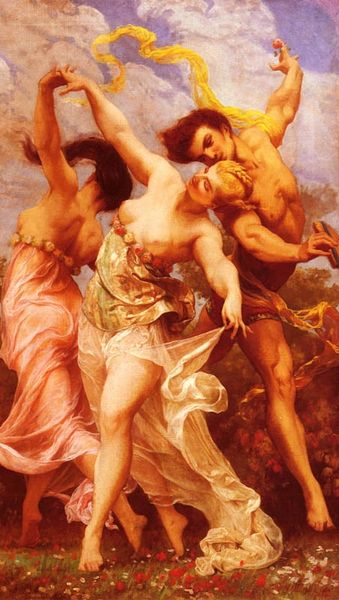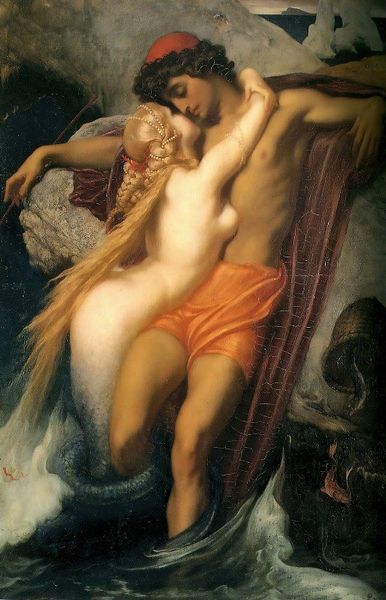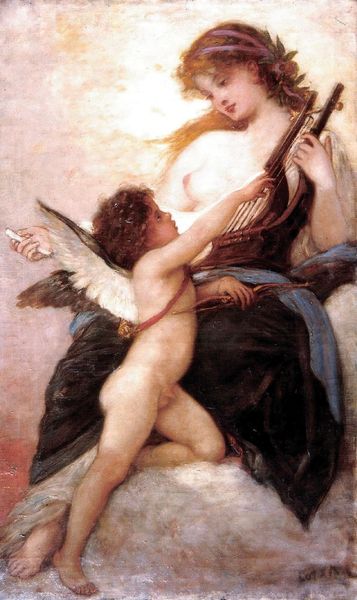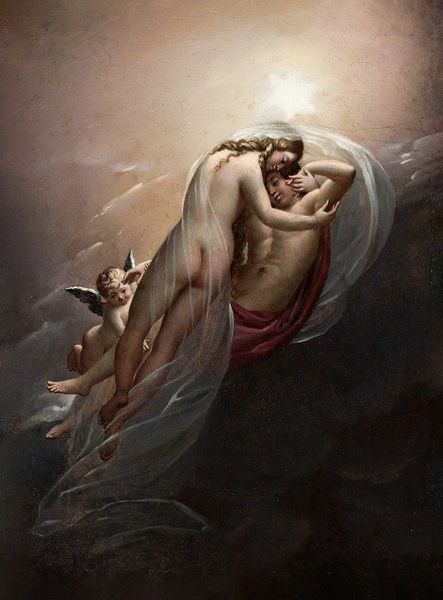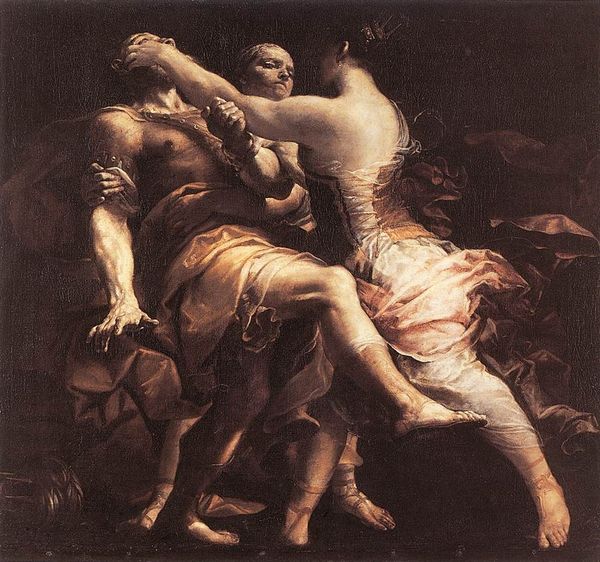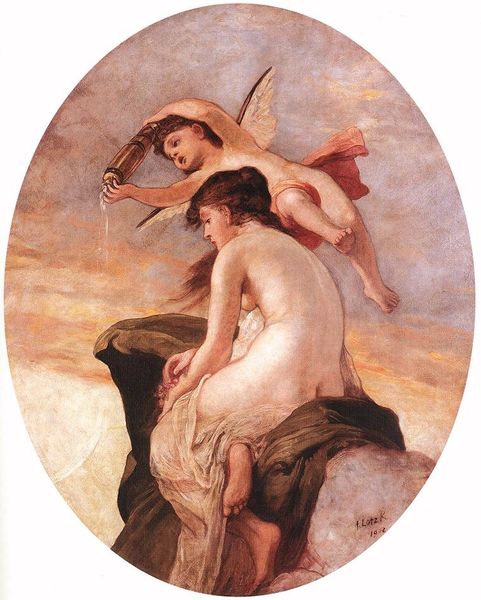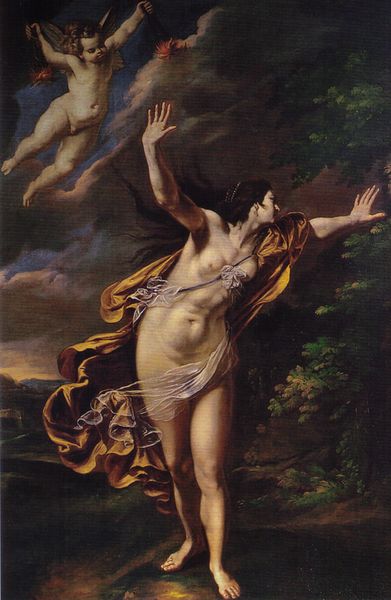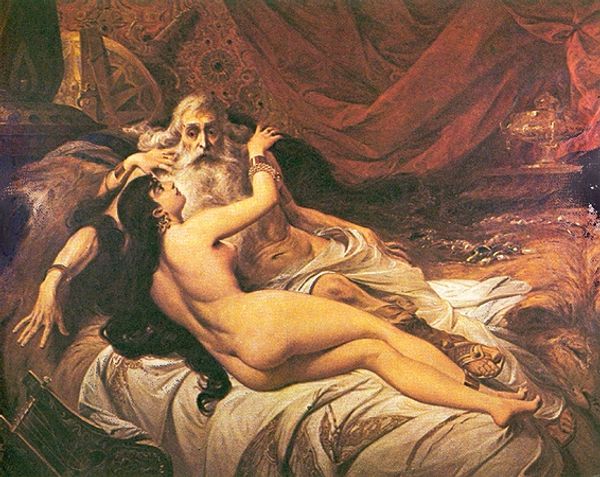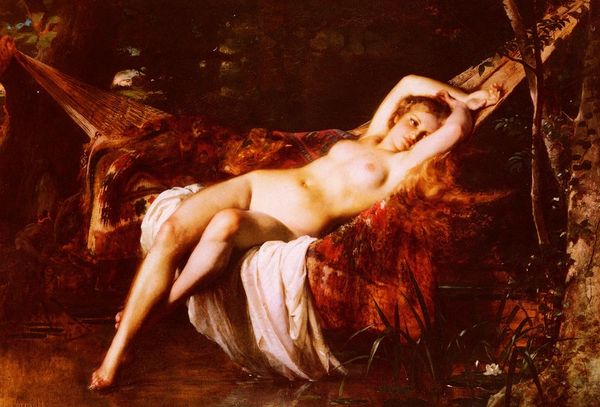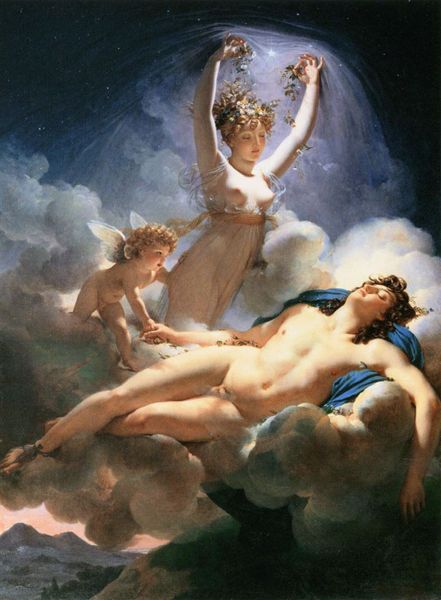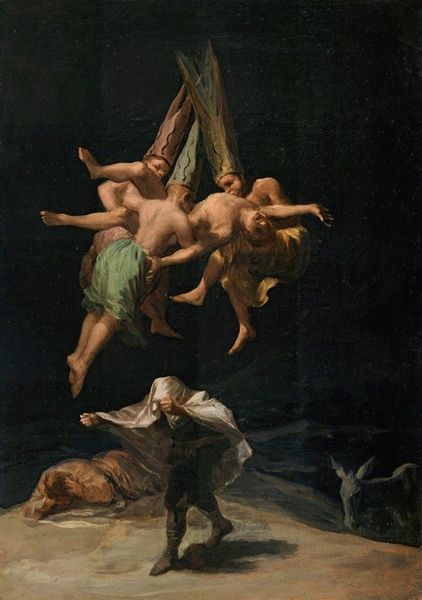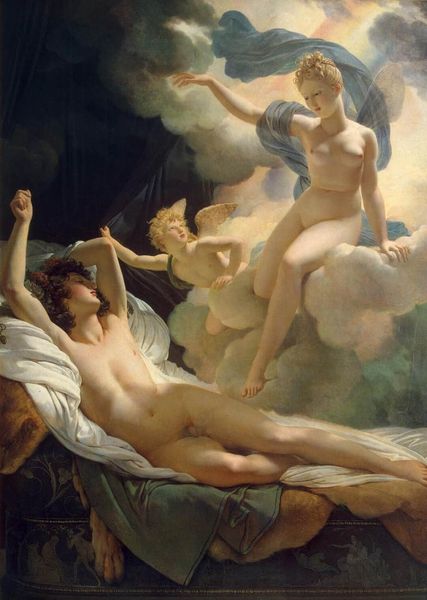
painting, oil-paint
#
allegory
#
painting
#
oil-paint
#
figuration
#
roman-mythology
#
romanticism
#
mythology
#
history-painting
#
nude
Copyright: Public domain
Editor: Here we have Jérôme-Martin Langlois’s “Diana and Endymion,” painted in 1822 using oil paint. I’m immediately struck by the theatrical lighting and the dramatic poses of the figures. What’s your interpretation of this scene? Curator: I see this painting as more than just a depiction of Roman mythology; it's a reflection of the complex power dynamics inherent in the romantic ideal. The female gaze, represented by Diana, literally descends upon the sleeping Endymion. How does the active gaze of Diana and the passivity of Endymion resonate with your understanding of gender roles in the 19th century, particularly within artistic representation? Editor: I see your point. It’s like Diana is actively choosing and Endymion has no agency in the moment. The light enhances this further as he is bathed in it, completely vulnerable. Curator: Precisely. Consider how Romanticism, while seemingly celebrating individual freedom, often reinscribed traditional hierarchies, especially regarding gender. The myth becomes a canvas upon which cultural anxieties about female power and male vulnerability are projected. It invites us to question whose story is truly being told and for whose benefit? Editor: So, reading it as just a romantic depiction would miss a whole layer of social commentary. What about the Cupid figure in the background? Does that shift your interpretation at all? Curator: That’s a keen observation. I think Cupid is placed deliberately, highlighting the artifice of idealized love and potentially, the dangers of romantic obsession. His knowing gaze seems to acknowledge the constructed nature of the scene. Editor: I've never considered mythology with these kinds of contemporary ideas in mind. I thought mythology was simply reflecting on stories of gods. Curator: Exactly. By applying critical lenses, we transform passive viewing into active engagement with history, revealing art's power to both reflect and shape societal norms.
Comments
No comments
Be the first to comment and join the conversation on the ultimate creative platform.
